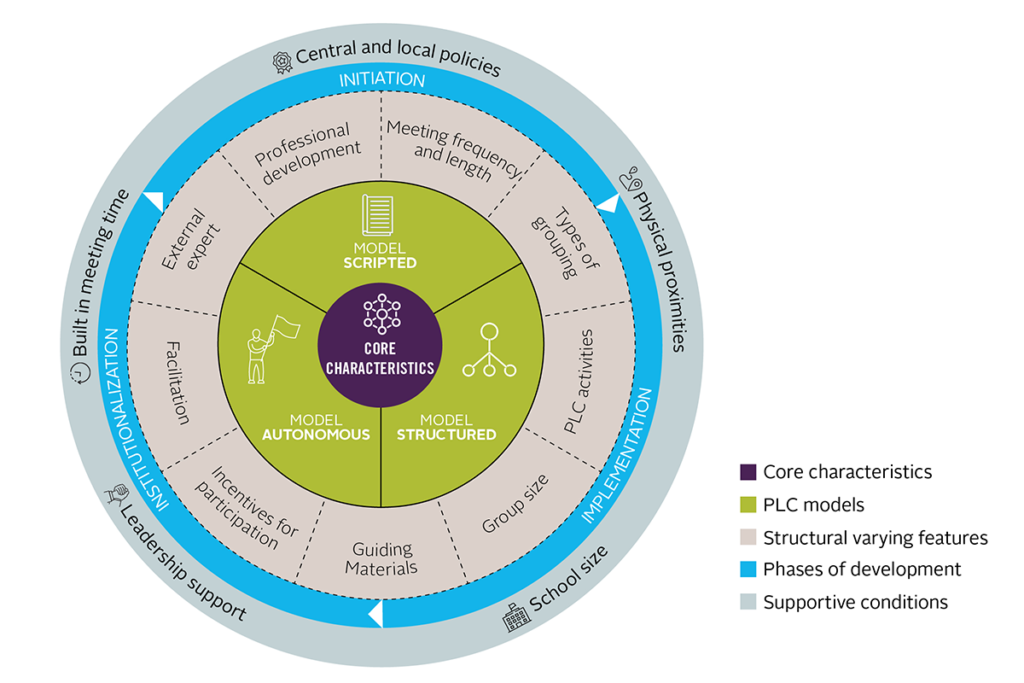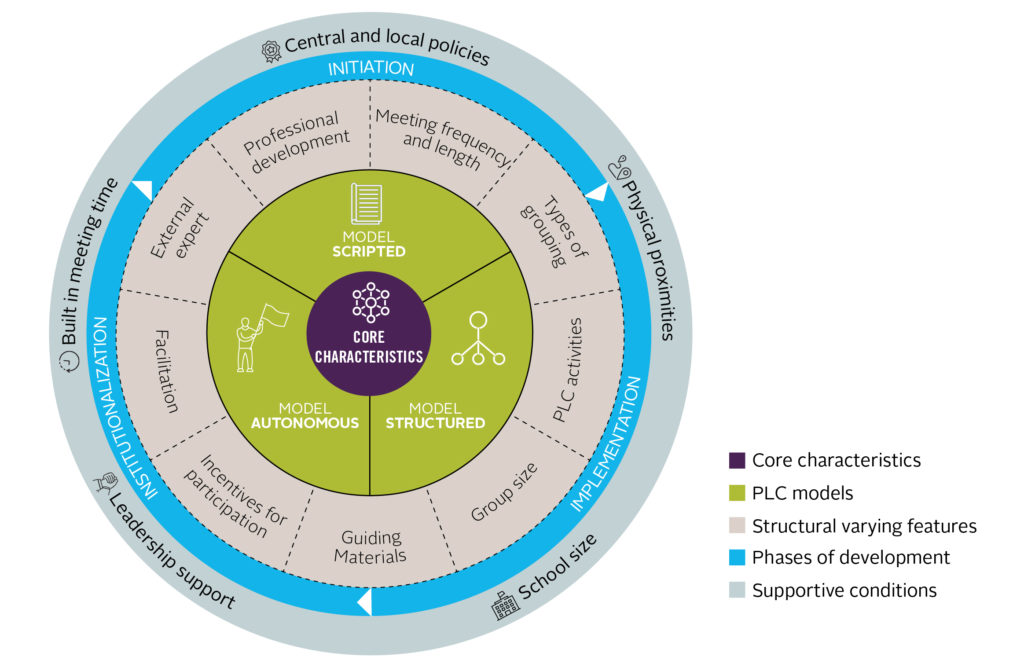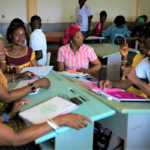By: Fernanda Soares (FHI 360) and Tanya Smith-Sreen (FHI 360), with Kirsten Galisson (FHI 360) and Mindel van de Laar (Maastricht University)
Professional learning communities (PLCs) are an alternative approach to teacher professional development, especially in low-and-middle income countries (LMICs). Existing conceptualizations of PLCs in Western literature, however, don’t recognize that PLCs in LMICs may operate differently to reflect local contexts. In fact, much of the literature considers PLCs only school-based, organic initiatives and doesn’t acknowledge that PLCs in LMICs are often purposeful and part of broad educational reforms. A previous post describes this lack of evidence.
In order to address this lack of evidence, we realized we first needed a conceptual understanding of PLCs, grounded in the realities of LMICs. So we conducted a study in Equatorial Guinea, Ghana and Nigeria to create a typology of PLCs in sub-Saharan Africa. We then combined our typology with existing conceptualizations to inform the design of a PLC framework. Our framework establishes conceptual foundations for future research and equips practitioners with guidance for designing and promoting PLCs. We describe our findings and the integrated conceptual framework we created in this post.
Methods
Findings: Features and models of PLCs in sub-Saharan Africa
After combing through the documents identified, which ranged from PLC design documents to PLC guides to PLC policy briefs or white papers, we find that PLCs possess some common characteristics that tie them together but often vary greatly. For example, we find that PLCs can group teachers within a single school and also across multiple schools. Sometimes PLCs are stand-alone or part of broader teacher professional development. We also find PLCs vary in group size, the frequency with which they meet, incentives offered to teachers, and whether an external expert participated. We list all the themes that emerged from our comparison in Table 2 of the paper.
During our document analysis we find that PLC materials, such as PLC guides and manuals, vary considerably in their level of prescriptiveness. In other words, some PLCs allow for open-ended discussions while other PLCs are more highly scripted. This level of prescriptiveness can influence teachers’ autonomy within PLCs so we used our data to identify key determinants of the internal PLC dynamic and of teachers’ level of autonomy – and three conceptual categories of PLCs emerge: autonomous, structured and scripted. The three models differ by the type of materials, incentives and professional development provided to teachers which influences how open-ended or scripted a PLC tends to be.
In the autonomous model, teachers are highly involved in identifying their starting points and learning needs, which help determine the priorities for the PLC. The structured model straddles the line by providing teachers with structured guidance to shape community dialogue, while allowing for some level of autonomy. Finally, the scripted model is meticulously designed with highly-scripted materials and pre-defined community content.
Our integrated conceptual framework of PLCs
We integrated these findings with existing literature to create the conceptual framework of PLCs pictured below. Our validation sessions with practitioners revealed that the framework reflects PLC operations well and practitioners went on to validate categories included in the framework.
Our framework consists of five interconnected dimensions, grounding the multidimensional nature of PLCs in something more concrete.
There are the core characteristics (the purple center of the framework) of success for PLCs, irrespective of the model or design it uses. As we say in the paper, the core characteristics refer to the five essential characteristics “that received the most support in the Western PLC literature: shared norms and values; focus on student learning, reflective dialogue, deprivatization of practice, and collaboration” (Soares et al., 2020). Our semi-structured interviews revealed that these characteristics are being implicitly considered in the design and implementation of the PLCs.
We define the three PLC models (the green ring of the framework) – autonomous, structured and scripted – based on the level of PLC autonomy and structure, which is directly related to the types and prescriptiveness of the materials used in the PLC sessions, the provision of incentives for participation and integration with a professional development program. By incorporating PLC models in the framework, we acknowledge modes of operation that are specific to sub-Saharan Africa countries.
The structural varying characteristics (the beige ring of the framework) like group size, guiding materials and facilitation method are usually associated with the design of the PLC. These structural features can vary greatly within any PLC model.
The phases of development (the blue circle of the framework) refer to the different stages any PLC may go through from the moment of its creation, in recognition that PLCs are constantly changing: initiation, implementation and institutionalization.
And the supportive conditions (the green circle of the framework) refer to factors outside of the PLC that may allow or hinder its creation, ongoing management and sustainability (Bolam et al., 2005).
What’s next?
Much remains unknown about the optimal design and implementation of PLCs in LMICs. Ultimately though, our PLC framework gives us the theoretical underpinning to start answering some of the most pressing questions about PLCs for development programming. Such as, which of the three PLC models is most effective in promoting the five PLC core characteristics? Is it more beneficial to have scripted approaches when initiating a PLC versus an autonomous model for more mature PLCs? Building evidence around PLCs is about answering these questions. This integrated conceptual framework for PLCs can be a pathway to get there.
Photo credit: Framework of professional learning communities from journal article (https://doi.org/10.21083/ajote.v9i2.6271)




